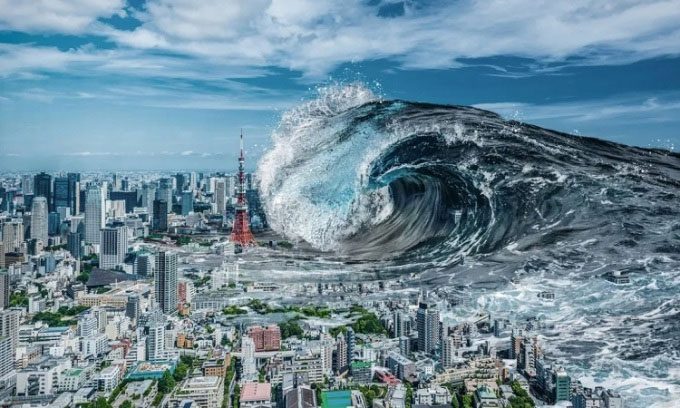Through offshore sensors and machine learning, a research team at RIKEN Institute has reduced the prediction time for tsunami impacts to just under one second, significantly increasing evacuation time before disasters.
In 2011, northeastern Japan was devastated by a tsunami disaster that claimed the lives of 18,500 people. Since then, Japan has focused on preventing similar disasters in the future. Currently, new research from RIKEN’s Laboratory for Forecast Science utilizes machine learning to accurately predict tsunami impacts in less than one second, as announced by the institute at the end of December 2022.

Simulation of a tsunami hitting a city. (Photo: iStock)
“The main advantage of the new method is the speed of prediction, a key factor in early warning systems,” stated Iyan Mulia, a scientist at RIKEN and the research team leader. “Conventional tsunami models provide predictions after 30 minutes, which is far too late. But our model can predict within a few seconds.”
To achieve this, researchers installed the largest sensor network in the world along the Japanese coastline to monitor the movement of the ocean floor. The network consists of 150 offshore stations that work together to provide early tsunami warnings. However, for this to be effective, the data generated by the sensors must be converted into wave height and scale along the coast. This typically requires solving nonlinear equations, which standard computers take about 30 minutes to resolve, resulting in insufficient time for evacuation before a disaster strikes.
This is why RIKEN’s AI model plays a crucial role in saving lives. The new model allows individuals at risk to have at least 30 minutes to evacuate from impending tsunami waves. The RIKEN research team trained their machine learning system using over 3,000 simulated tsunami events and tested it against 480 different tsunami scenarios, as well as three real tsunami events. They found that the machine learning-based model could achieve accuracy far beyond that of conventional computers. The research team asserts that their model can be effective for any natural disaster requiring time-sensitive responses.
In December 2021, researchers developed a new method for detecting tsunamis through the magnetic fields generated as tsunamis travel through conductive seawater. This magnetic field can be detected several minutes before sea levels rise, providing additional reaction time. Although impressive, the old method cannot compete with RIKEN’s latest model. However, the model is only accurate for larger tsunamis over 1.5 meters in height. Mulia and his colleagues are working to improve the model’s accuracy for smaller tsunamis.


















































